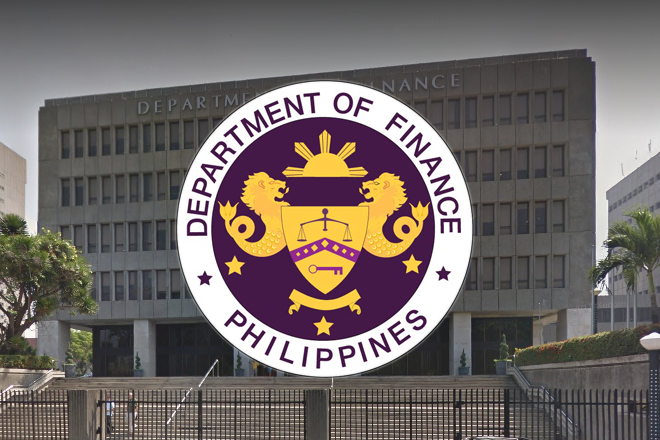7% GDP growth sustainable over the medium term: DOF
November 10, 2017
Finance Secretary Carlos Dominguez III has expressed confidence that the Philippines can sustain a 7 percent gross domestic product (GDP) growth rate over the medium term, fueled by an infrastructure modernization program under the Duterte administration that will disperse industries to the countryside, and create jobs for the country’s young workforce.
Dominguez said the government’s P8.4-trillion “Build, Build, Build” infra program will be the key driver of the country’s growth over the next few years, with investments increasing to about 7 percent of GDP, higher than the average in the Association of Southeast Asian Nations (ASEAN) region.
"The 6.5 percent growth for the first semester makes the Philippines the second fastest growing economy in Asia after China. We retain the 7 percent growth rate target for the year, spurred by the investment spending in the infrastructure program. We believe this growth rate is sustainable well into the medium term,” Dominguez said at a recent business forum.
“Increased investments in modernizing the country’s infrastructure will be the key driver of our growth the next few years,” he said. “These investments seek to bring up our infra to match those of our most progressive neighbors. By modernizing our infrastructure, we will address congestion in our ports, airports and roads.”
To maintain fiscal discipline while embarking on this infra buildup plan, he said the government is working on the congressional approval of a tax reform package in order to spell a steady revenue stream for its priority investment programs.
“Investing in infrastructure has the highest multiplier effect on the economy. It creates construction jobs in the short term and manufacturing jobs in the long term. It improves land prices, assists in raising our agricultural productivity and encourages dispersal of our industries into the regions,” Dominguez said.
According to Dominguez, infrastructure is “the key to overcoming the challenges posed by our archipelagic topography, especially uneven regional development and isolated island economies.”
“The quality of our infrastructure fell behind those of our neighbors because of many years of under-investment. While we grappled with the debt crisis and imposed austerity, our investment in new infra fell to nearly half the regional average. Over the past year, we have doubled spending on infrastructure as a percentage of GDP. In the coming years, we plan to increase economic investments to about 7 percent of GDP, higher than the regional average,” Dominguez said.
He said the Philippines can no longer postpone infrastructure modernization and increased investments in human capital development, given the changing economic landscape in the ASEAN region, which is swiftly clearing the way toward regionalization.
“The timetable set by the ASEAN Free Trade Area (AFTA) means we can no longer postpone modernization of our infra and postpone the training of our young to be functional in a globalized economy. We can no longer have a deficient bureaucracy and substandard governance,” added Dominguez.
He said the government is “ready to meet the challenges of regionalization and confident this will work for our people’s betterment.”
“This is what the promise of change is all about. This is what the present government intends to accomplish,” Dominguez said.
The finance chief said the “Build, Build, Build” program will initially be funded by official development assistance, which includes “a significant amount of grants,” and will later be supplemented by “budgetary outlays and various forms of public-private partnerships.”
“We are looking to invest over 8.4 trillion pesos in six years in new infra, to include better irrigation networks and more farm-to-market roads. We trust the private sector will bring in the investments in agribusiness and manufacturing to make the modern logistics system worthwhile,” Dominguez said.
To keep fiscal discipline in check as the government spends heavily on infrastructure, Dominguez said the Duterte administration is counting on the Congress to approve a Comprehensive Tax Reform Program (CTRP) that will help cover the costs of economic investments through improved revenue flows.
Dominguez said he is hopeful that the first package of the CTRP, which slashes personal income tax rates while introducing new excise tax measures and widening the value-added tax base, would bring in an additional P134 billion in revenues “to support spending for infrastructure, education and health care that will benefit 99 percent of the population.”
The House of Representatives approved its version of the CTRP’s first package, dubbed the Tax Reform for Acceleration and Inclusion Act (TRAIN), last May. The Senate is set to resume plenary debates on its own version of the measure this month following the reopening of the Congress after its latest recess.
“We are hopeful this first package could be enacted before the end of the year. This will enable us to implement income tax rate reductions and increased exemptions by the start of next year,” Dominguez said.
Dominguez said agriculture will also keep pace with rapid growth as more investments in modern farm systems, greater access for agricultural produce and more scientific inputs are made in this sector, which will, in turn, “speed up the liberation of our rural poor from poverty.” DMS
Latest Videos
- THE UNTOLD STORY EXPERT INSIGHTS INTO THE UKRAINE
- NEGOTIATING A NEW ORDER US RUSSIA TALKS ON UKRAIN
- Ukraine: A Pawn in the Geopolitical Game? Will Trump Intervene?
- US VP VANCE CRITICIZES EUROPEAN DEMOCRACIES AT MUNICH SECURITY CONFERENCE
- UNCOVERING THE WEB OF DECEIT: CIA INFILTRATION OF THE MEDIA
- SHIFTING SANDS: TULSI GABBARD’S CONFIRMATION AND THE EVOLVING GLOBAL LANDSCAPE
- FAUCI SCANDAL: A THREAT TO GLOBAL HEALTH AND DEMOCRACY






